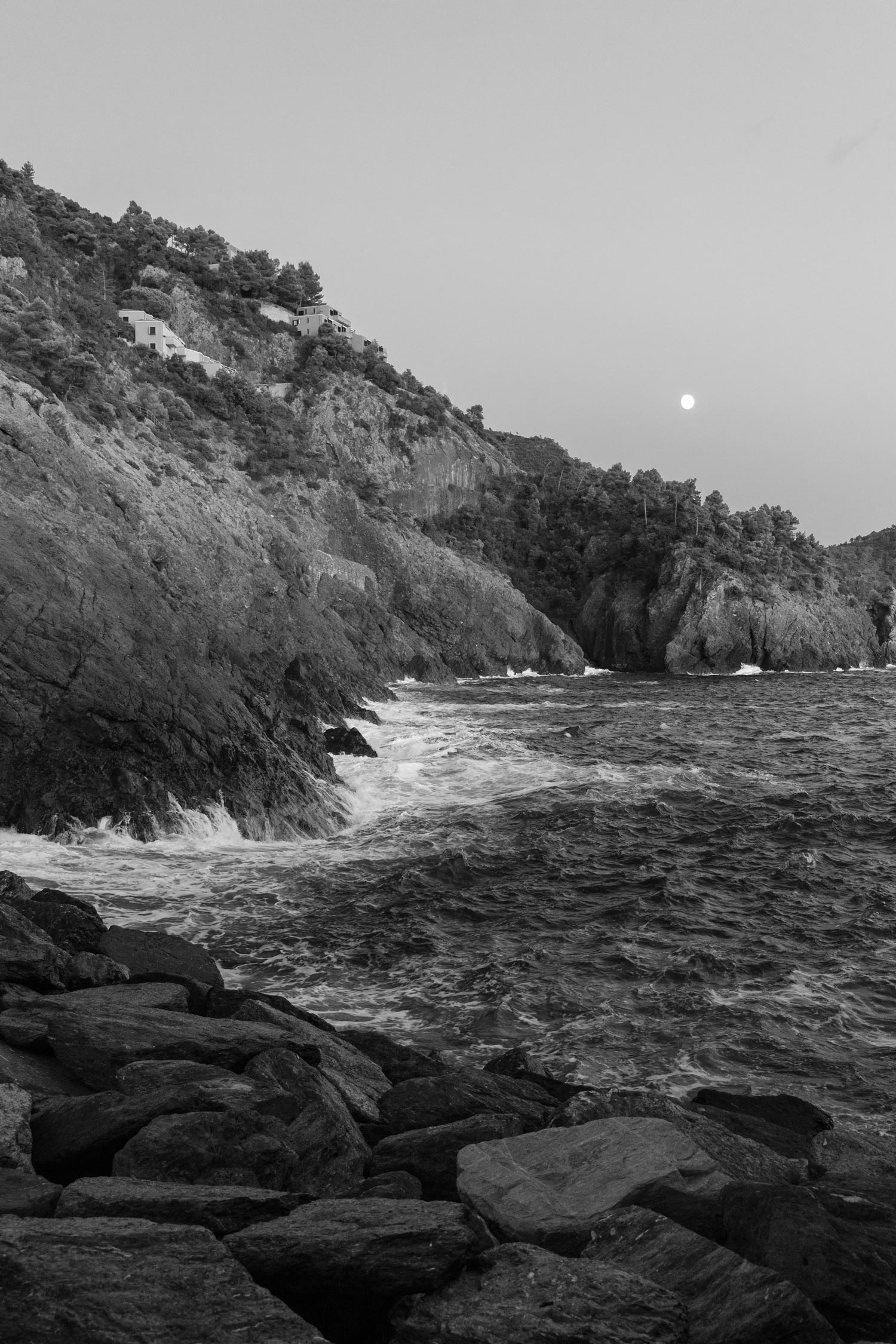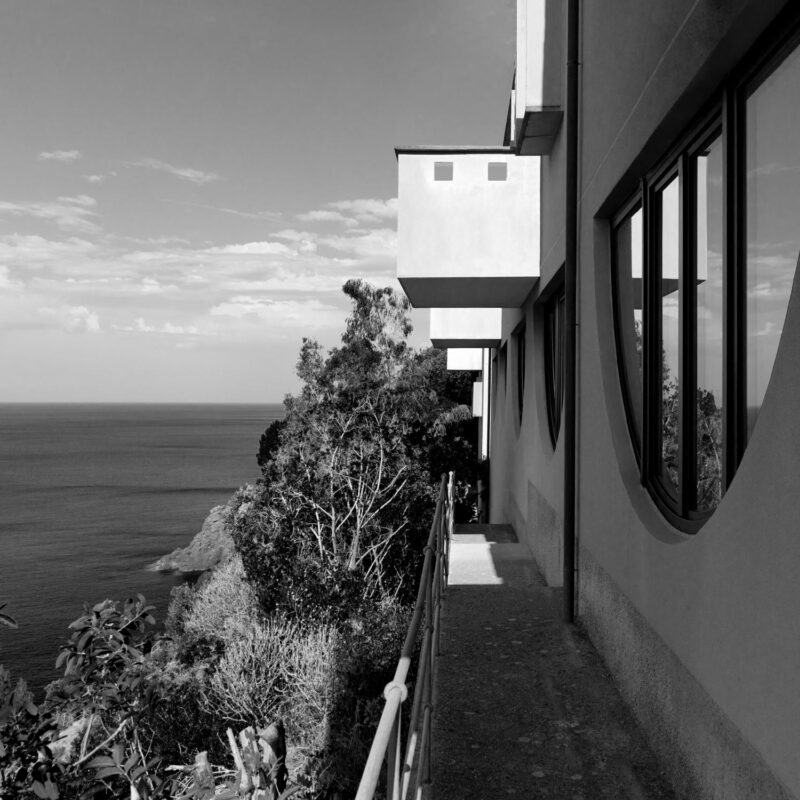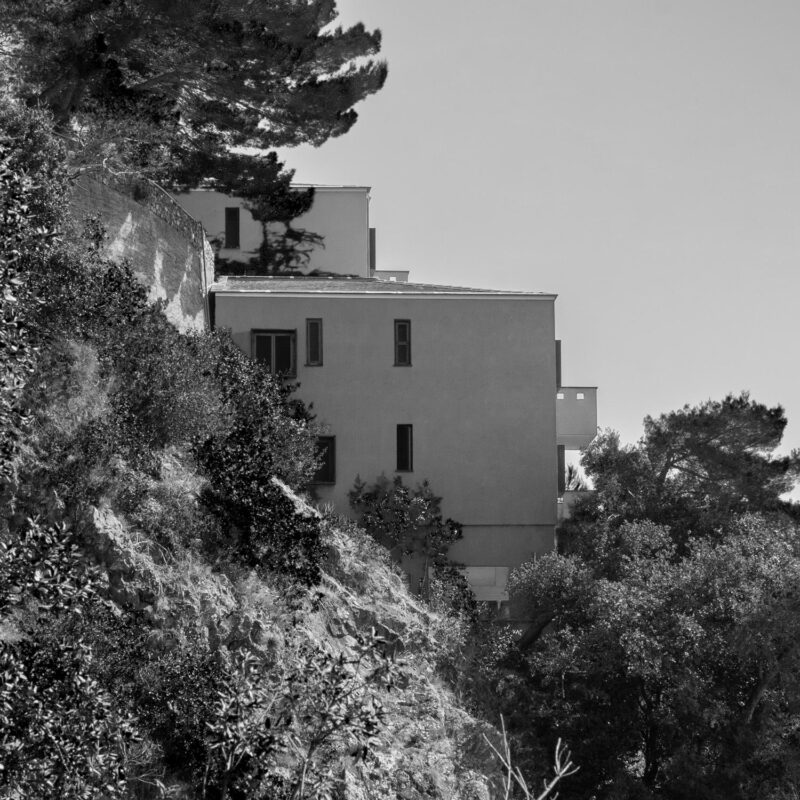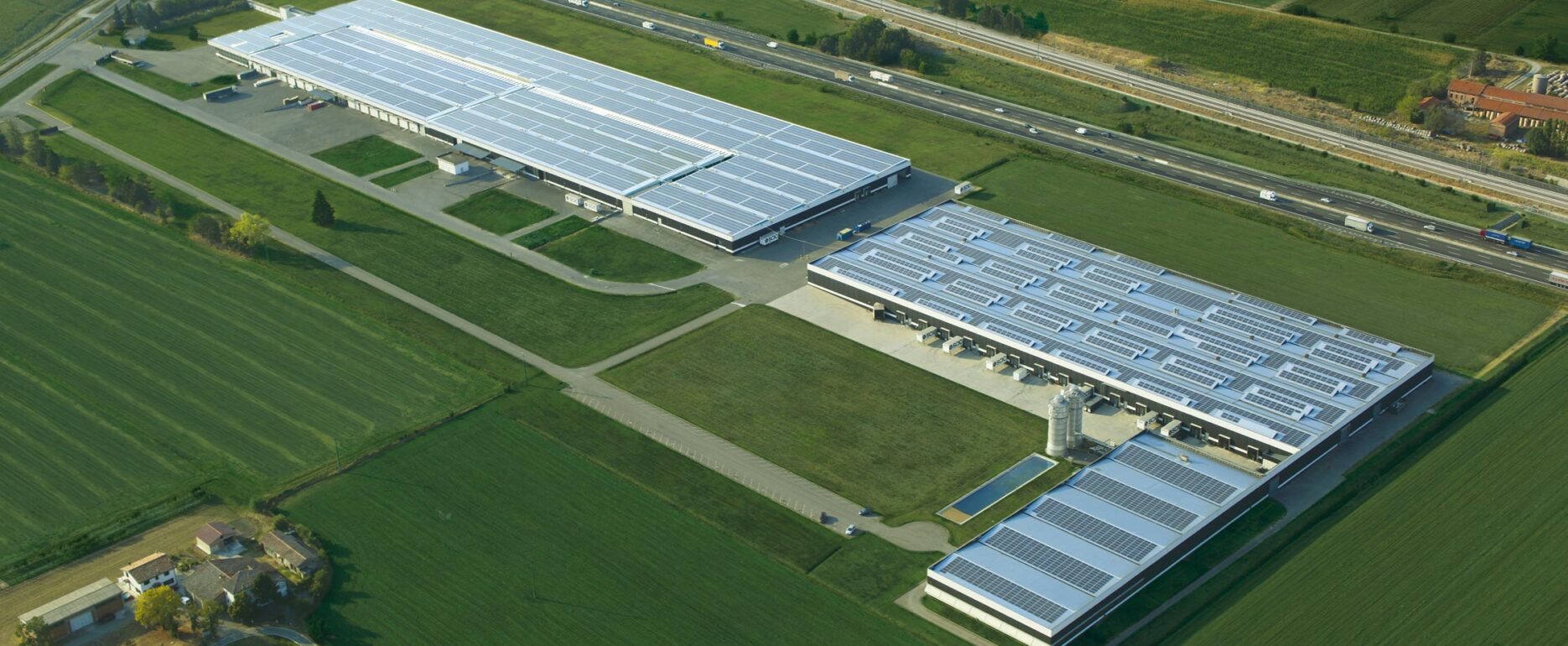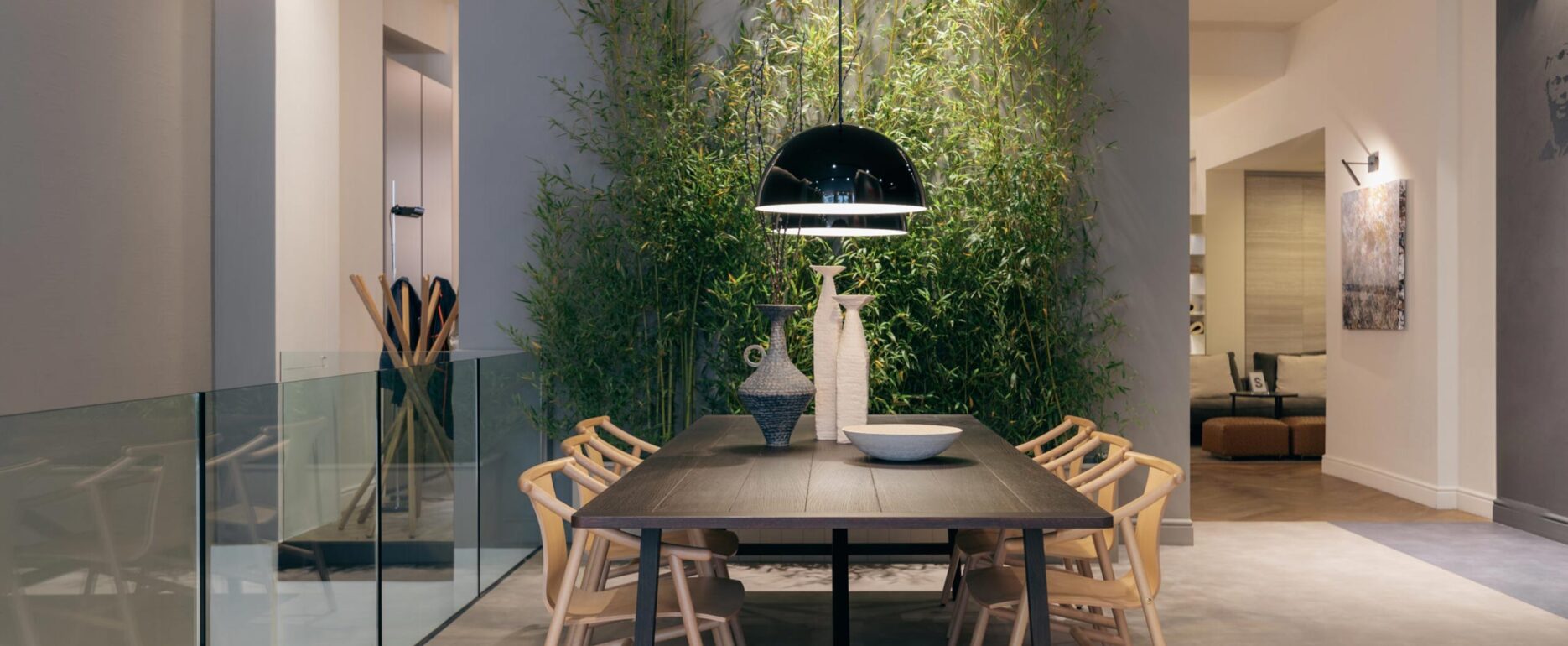”It’s only after you have come to know the surface of things […] that you can venture to seek what is underneath. But the surface of things is inexhaustible.
Italo Calvino, Palomar, 1983
Proceeding leftwards like in Arabic writing, the Ligurian coast begins at Punta Bianca, the last bit of the Apuan Alps: a marble-like white flash descending underwater. Going up the Caprione promontory, the Gulf of La Spezia stands out horizontally between Lerici and Portovenere; then, heading north-west, a sequence of bands of limestone rocks of all shades − red, yellow or black, in the case of Portoro.
Three islands, looking like three dots progressively immersing in the open sea: suspended.
Tramonti, unspoiled.
Then: the Cinque Terre.
In contrast with the grey sandstone boulder on which they rest, the Cinque Terre are a group of settlements that became a tourist destination from the second half of the last century: their houses, in keeping with the rough and rugged territory, have more of an earth-bound rather than a marine look. After the year 1000, those who chose to stay and live in these places formed a tight-knit relationship with the territory, not only in terms of urban planning, but also through vine and olive cultivation, which was essential for their livelihood, but required tremendous human work to transform steep slopes into arable terraces. This is a thousand-year pact between men and their environment.
As time goes by, the vertical balance becomes increasingly fragile: human customs and traditions evolve with each generation; the territory, static under the pressure of the tourist inflow of the new millennium, is only getting older. To those who arrive from La Spezia,
Monterosso is known as “the last one” of Cinque Terre: the magnificently beautiful Mesco promontory, with its serpentine head in the depths, sleeps like a reptile of the Jurassic. With eyes focused on the sleep of the terrible lizard, dreading its awakening, we pass the bay of Levanto, where the sea seems to have come first: everything seems slightly quieter. In Bonassola, the gabbro rocks shining under the sun take centre stage; then, beyond Punta dei Marmi, Odysseus takes a little break.
We can imagine the Milanese Vico Magistretti, exploring the coast of La Spezia, between La Serra di Lerici − his buen retiro in the 90’s − and Framura.
Magistretti designed Case Rosse in Vandarecca, Framura, in 1963: to him, the Ligurian coast was an out-of-town extension of the Milanese industrial reality. The residential complex can be reached via a breathtaking detour off the road descending vertiginously from Costa to the railway station and running through all the villages in the municipality. The complex is built solidly on the cliff at 50 to 120 metres above sea level. The human gaze and the horizon meet at the same altitude.
All apartments are identical, both in the uphill and in the seaside area. Designed by aggregating three “L” shaped modules, 5 x 5 x 3,3 m each; this is why Case Rosse stands out as a social housing project but also expresses its existential vision: all humans should be free from hierarchies.
This democratic vision is somewhat resemblant of the Cinque Terre’s landscape. Framura is an extension of the Cinque Terre, not only in geodetic terms.
“In this project, houses are not separated […] − they are small buildings with a common backyard − but everything is concentrated in a single complex. Looking at the mountain from the sea, it is a mix of houses and empty space, unlike those hideous isolated buildings that have spoiled the Ligurian coast.”
And again: “There’s a great lesson to learn from the villages of the Cinque Terre: when you observe them, you don’t even think of expressing an architectural judgment. The core housing is a prearchitectural organism; given the social function of housing, architecture is not the priority. Architecturally, it is simply a juxtaposition of blocks, volumes stuck close together”.
With these words Magistretti roots the design choice of Case Rosse in local history and culture: based on the model of the villages of the Cinque Terre, it embodies an intervention on landscape rather than a simple architectural project.
“These are two sets of houses, almost forming two small villages; due to the very sheer slope, the aim of the construction is to exploit each portion to the fullest, while at the same time creating intimate areas of movement between the uphill and downhill complex. Each apartment is entitled to its own privacy despite the narrowness of spaces, sometimes, even sacrificing any chance of introspection.”
The project expresses a social model of co-existence, based on the common needs of humans living in a gruelling but gentle environment that, most importantly, has been conquered with an effort. Barricading was a form of defence from pirate raids, which lasted through the Middle Ages and beyond, but also from the sea itself and its fury. To be together, close, is to be strong with each other − becoming a fortress, as Giovanni Giudici said. This is how Magistretti envisioned Case Rosse: a fortress, each house protecting the other.
Defensive fortifications on the neighbouring coasts, built in 9th century as ordered by ancient lords Da Passano of Deiva Marina, prove the constant threat faced by local populations.
On the choice of red, Magistretti does not provide a specific reason, but rather a Kantian-inspired, aesthetic judgment: “I painted them with a specific red colour, they look nice”, then, paraphrasing Hegel: “Somehow colours should tie to history”.
Although red is a constant in his works, in his drawings and sketches as a way to highlight concepts or forms, in his most famous furniture, in architectonic details and even in the socks he used to wear, reasonably the project of Framura has nothing to do with the famous instances of “Rosso Vico”, but rather with a very important theme of his research: the relationship between building development and landscape integration.
Let’s head down and explore further.
A steep mule track (crêuza, as the one Fabrizio De André would sing about) passing through a thick patch of mastic and myrtle bushes, shaded by pines and oaks, connects Case Rosse to the ruins of old buildings, evidence of an ancient mining operation around a quarry of Rosso Levanto marble abandoned for centuries, almost invisible due to the dense vegetation that has easily invaded the site. Seemingly, the deposit was exploited since Etruscan times, as proven by funerary artifacts made with this marble and found in a necropolis of Central Italy; in modern times it purportedly was given in concession in 1610 as part of the Montaretto quarry, and was also the source of marble used for the columns of some Ligurian churches, such as the Cathedral of San Lorenzo in Genoa: this would explain its nickname “Cava delle Colonne”. The location is “Punta Colonna”, better known as “Punta dei Marmi”. We are at sea level.
In the interview with Hans Ulrich Obrist, Magistretti recounts how in the original project (then shelved) of the Torre al Parco in via Revere (Milan) the brown paint was supposed to match the tree trunks in Parco Sempione as a proof of the fact that he cared about environmental mimesis.
Thinking of Odysseus aboard his Argo as he explores the Eastern Ligurian Riviera, arriving at Punta dei Marmi must have been a truly striking sight: the wine-coloured stone covers the whole bay, where marble was originally mined; the rocks of the bay are centuries-old scraps of quarry operations, which turned greener due to the high serpentine content: the most valuable stone has been used in Italian churches, from Genoa to Florence, and overseas, from the Empire State Building to the Washington Senate.
Prisms abandoned and oxidized by time are like mute characters; perfectly-cut corners in the mountain stand out as terraces between Mediterranean scrub and sea-facing platforms: a natural scenario with a hint of surreal.
With his ears unplugged to hear the Syrens singing, Odysseus is now vulnerable and sensitive to the fascination of red, which inspires him to create the Case Rosse project.
Case Rosse encapsulate all the elements of the territory, not only through the red colour of stone that is replicated on the building, but also morphologically: the shapes of Magistretti’s project, of the very houses anchored to the cliff, resemble the hollowed steps left from the marble extraction, the cantilevered balconies remind of the blocks abandoned on the embarkment, which in turn rhyme with the windows, whose slated framework directs the gaze outside, and then, again, with the square-section holes decorating the parapets.
This play of solids and voids, physical and metaphysical, positive and negative volumes, is designed and realized in symbiosis with the environment, immersed in a lush vegetation which, from one moment to the next, could take the area back to its primordial state, just like time and nature have reclaimed Cava delle Colonne.
Just like the Cinque Terre have turned into a marine destination, Punta dei Marmi today has a different purpose, actually regressing to its origins; the Maremonti shared-use path opened in 2011 and connecting Levanto to Framura via the former single-track railway − abandoned since 1970 − has facilitated its transformation into a destination of free, human and lonely seaside tourism.
On the heights between Framura and Bonassola, Montaretto − a small village linked to mining activity up to the last century − still has an active quarry of Rosso Levanto marble, available in its main variants (Breccia di Levanto, Breccia di Framura and Verde di Levanto), depending on the grain size and the percentage of hematite, serpentine and calcite.
Magistretti-Odysseus admits he never came back to see Case Rosse but now − forty years later – he remembers Framura as the Cinque Terre used to be, and also as the first village the Cinque Terre. In this journey Framura is our Ithaca: Case Rosse are a synthesis between the Cinque Terre − in the context of a territory rich in raw and vital materials − and Framura, the first one, a primary material, a forethought of a world and a model to go back to in order to escape from oblivion.
BIBLIOGRAFIA
AA. VV., Le Cinque Terre viste dalla Luna – Conversazioni con Vico Magistretti, Ippolito Pizzetti, Franco Cordelli, Società Editrice Buonaparte, 2005
AA. VV., Vico Magistretti. Architetto milanese, Electa, 2021
Hans Ulrich Obrist, Interview 01: Vico Magistretti, in Domus 866, gennaio 2004
Roberto Andreotti e Federico De Melis, Magistretti in riviera, in Alias 41, 21 ottobre 2006
Andrea Savio, Case Rosse a Framura, Jaca Book, 2 Dicembre 2021
WEBLIOGRAFIA
https://archivio.vicomagistretti.it/
https://censimentoarchitetturecontemporanee.cultura.gov.it/
https://www.archeominosapiens.it/
